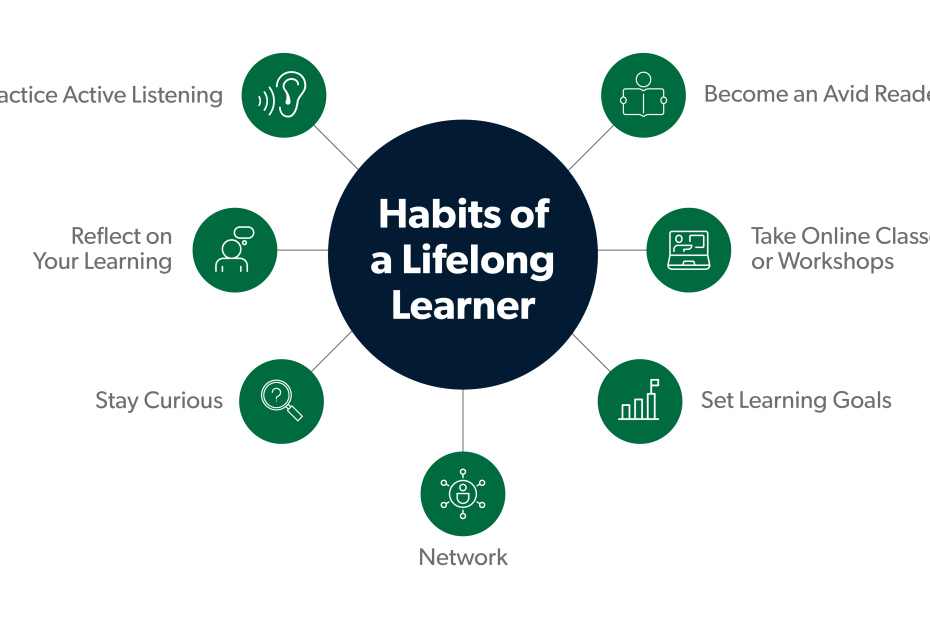I still remember the day I officially retired. Forty years of teaching mathematics at a bustling high school in the suburbs of Boston had come to an end. My colleagues gave heartfelt speeches, my students wrote me letters, and I walked out of that building with a gold watch and a sense of accomplishment. But in the weeks that followed, I felt something strange—a gnawing emptiness, as if my mind was an engine idling without a road to drive on.
That was when I truly began to understand the essence of lifelong learning. You see, learning isn’t confined to textbooks, classrooms, or the years before you get your first job. It’s a constant process of curiosity, adaptation, and growth that should follow you until your very last day. And in our rapidly changing world, it’s no longer just an enriching hobby—it’s a necessity.
When I first started teaching in the 1970s, technology in the classroom meant an overhead projector and maybe a slide rule. By the time I retired, my students were coding in Python, running simulations, and using online platforms to collaborate with classmates halfway across the globe. If I hadn’t embraced continuous learning during my career, I would have become irrelevant within a decade. The same applies outside the teaching profession.
Lifelong learning sharpens the mind, improves adaptability, and keeps you competitive in the job market—whether you’re 25 or 75. Skills can expire faster than milk in a summer sun if you don’t keep updating them. For example, I took a data analytics course online a few years after retirement—not because I wanted a new career, but because I wanted to understand the world my former students were entering. It opened up a fascinating world of statistics applications in healthcare, business, and even sports analytics.
But lifelong learning isn’t only about career relevance. It enriches personal life, fosters social connections, and gives a sense of purpose. I took up learning Italian simply because I wanted to read Dante in the original language. The process of attending weekly classes, struggling with pronunciation, and sharing laughs with fellow learners rekindled the same excitement I had as a freshman in college.
In today’s world, resources for lifelong learning are endless—online courses, local workshops, community college programs, professional seminars, podcasts, and even hobby clubs. The key is to remain open-minded and proactive. Don’t wait for necessity to force you to learn. Instead, cultivate the habit of asking: What’s something new I can explore this month?
I recall one of my former students, Emily, who graduated with a degree in mechanical engineering. Ten years into her career, automation reshaped her industry. While many of her peers resisted change, Emily signed up for night classes in software development. Within two years, she had transitioned into a role designing algorithms for robotic manufacturing. She once told me, “Professor, it wasn’t my degree that saved me—it was my willingness to keep learning.”
And that’s the truth. Whether you’re a retiree learning for the joy of it, a mid-career professional adapting to change, or a young graduate preparing for a shifting job landscape, lifelong learning is the compass that keeps you moving forward.
Building a Habit of Continuous Growth
Step 1: Identify Your Learning Goals
- Start by asking yourself what you want to learn and why.
- This could be related to professional development, personal interests, or skill gaps you want to fill.
- Example: “I want to learn data analytics to better understand market trends in my business.”
Step 2: Assess Your Current Skills
- Make a list of your strengths and areas for improvement.
- Use online self-assessment tools, feedback from colleagues, or personal reflection.
- This helps you focus on areas that will bring the most benefit.
Step 3: Choose the Right Learning Format
- Decide how you learn best: reading, online courses, workshops, hands-on practice, or peer groups.
- Examples:
- Coursera / edX – Academic-style courses from universities.
- Skillshare / Udemy – Practical, skill-based lessons.
- YouTube Learning – Quick tutorials for fast skill pick-up.
Step 4: Set a Realistic Learning Schedule
- Allocate fixed time slots weekly for learning, even if it’s only 20–30 minutes.
- Consistency is more important than long, irregular study sessions.
- Example: “Every Tuesday and Thursday evening, I’ll spend 1 hour on my online course.”
Step 5: Apply What You Learn
- Don’t just store knowledge—use it.
- Apply new skills in your job, personal projects, or volunteer work.
- This solidifies your understanding and makes learning more practical.
Step 6: Connect with a Learning Community
- Join groups, forums, or professional associations related to your learning topic.
- Networking with like-minded learners keeps you motivated and provides fresh insights.
- Example: LinkedIn groups, Reddit communities, local clubs.
Step 7: Track Your Progress
- Keep a journal or digital tracker of what you’ve learned, completed courses, and skills acquired.
- This helps you see how far you’ve come and keeps motivation high.
Step 8: Embrace Feedback and Reflection
- Seek feedback from mentors, peers, or instructors.
- Reflect on your progress every few months and adjust your learning goals accordingly.
Step 9: Diversify Your Learning Sources
- Avoid relying on just one platform or type of content.
- Mix books, podcasts, webinars, workshops, and real-world experiences for a richer perspective.
Step 10: Keep Curiosity Alive
- Cultivate a “beginner’s mindset.”
- Remember that learning doesn’t stop at a degree or a job promotion—it’s an ongoing, rewarding part of life.
For me, retirement didn’t mark the end of my teaching career—it simply shifted the focus. Now, I am my own best student, forever enrolled in the grand, unending university of life. And if there’s one thing I’ve learned, it’s that the day you stop learning is the day you truly retire from living.
